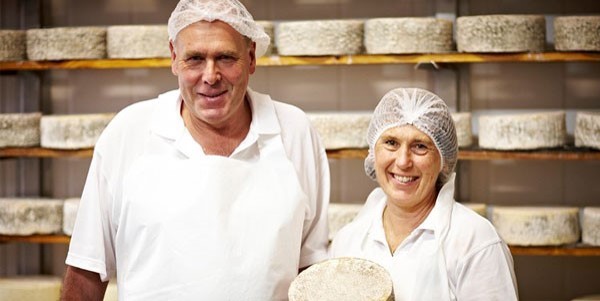How Floridia Cheese Melbourne Sets the Standard for Local Cheese Makers
How Floridia Cheese Melbourne Sets the Standard for Local Cheese Makers
Blog Article
Opening the Secrets of Artisanal Cheese Making: A Detailed Do It Yourself Overview
In the world of culinary craftsmanship, artisanal cheese making stands as a testament to the fragile equilibrium in between practice and development. As we begin on this trip to debunk the art of developing elegant cheeses, we are encountered with a tapestry of abilities and tricks waiting to be deciphered.
Selecting the Right Milk
When getting started on the journey of artisanal cheese making, the option of milk plays a critical function in figuring out the high quality and features of the end product. The kind of milk selected influences the flavor, texture, and generally account of celebrity. Raw milk, directly from the animal, is chosen by lots of artisanal cheesemakers because of its distinct mix of enzymes, microorganisms, and flavor compounds. Nevertheless, using raw milk features risks and regulations, making pasteurized milk a much safer choice for novices.
When picking milk for cheese production, it is essential to consider the fat material. Greater fat material in milk can cause a creamier and richer cheese, while reduced fat web content may bring about a drier and firmer structure. Additionally, the source of the milk, whether from cows, goats, lamb, or buffalo, contributes distinctive flavors and attributes to the cheese (Melbourne Made Cheese). Each kind of milk brings its very own nuances, enabling for a variety of cheese selections to be crafted based upon the chosen milk. Eventually, the option of milk is a fundamental decision that establishes the structure for an effective artisanal cheese-making endeavor.
Culturing and Coagulating
To initiate the cheese-making process, the critical actions of culturing and coagulating have to be meticulously implemented to change milk into curds and whey. The type of society made use of can dramatically influence the taste, structure, and ripening of the final cheese item.

The timing and temperature control throughout culturing and coagulation are important elements that influence the last end result of the cheese. Proper implementation of these steps is vital to ensure the wanted structure, taste, and consistency of the artisanal cheese being generated.
Draining and Pushing Curds
After the milk proteins have actually coagulated and the curds have been cut to launch whey, the following important action in artisanal cheese making involves draining and pushing the curds to achieve the preferred appearance and uniformity of the final cheese item. The time for draining pipes can vary depending on the type of cheese being made and the wanted wetness web content.
As soon as the curds have sufficiently drained pipes, the following step is pushing. Pushing assists eliminate any staying whey and compacts the curds to create a solid cheese wheel. Pressing can be done utilizing specialized cheese presses that use mild and consistent stress over a duration of time. The period and pressure applied during pushing will certainly affect the final texture of the cheese, from soft and velvety to hard and firm. Proper draining and pushing are critical actions that considerably impact the top quality and qualities of the hop over to these guys artisanal cheese being generated.
Aging and Flavoring Techniques
Executing thorough aging and flavoring strategies is essential in boosting the depth and intricacy of artisanal cheeses, elevating their taste accounts to beautiful degrees of improvement and elegance. Aging plays a crucial function in establishing the unique flavors and appearances that distinguish artisanal cheeses.
Flavoring methods additionally contribute considerably to the last preference of artisanal cheeses. Cheesemakers might choose to introduce extra tastes by including ingredients such as herbs, flavors, or also fruits right into the cheese during the production process. Furthermore, some cheeses are cleaned or massaged with various liquids, such as brine or alcohol, to improve their structures and tastes.
Covering and Storing Cheeses

Conclusion
In final thought, mastering the art of artisanal cheese making entails thoroughly choosing the best milk, adhering to precise culturing and coagulating procedures, draining and pressing curds properly, and utilizing different aging and flavoring methods. Bear in have a peek at this website mind to wrap and save your cheeses properly to make sure optimum flavor and structure growth.
Each type of milk brings its own nuances, permitting for a wide range of cheese ranges to be crafted based on the selected milk.After the milk healthy proteins have actually coagulated and the curds have been cut to launch whey, the following important action in artisanal cheese making involves draining and pressing the curds to accomplish the wanted texture and consistency of the last cheese item. Most cheeses should be wrapped in wax paper or cheese paper to allow them to breathe while securing them from drying out. For cheeses that need to proceed aging, such as bloomy peels or cleaned rinds, guarantee they are saved in an awesome setting like a cheese cavern or a fridge set to the suitable temperature. By paying focus to the covering and storage of artisanal cheeses, cheese makers and anchor fanatics can protect the integrity of these delicacies and totally enjoy their complex tastes.
Report this page